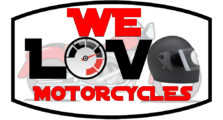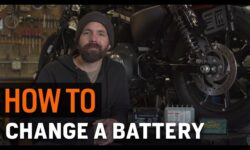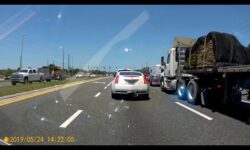Easy Motorcyle Pre-Ride Check
A pre-ride check of your motorcycle is very crucial – not only to your protection but for the safety of others too. This will only take you few minutes but it will save your life.

The Motorcycle Safety Foundation created the T-CLOCK mnemonic as a guide for a pre-ride safety check of your motorcycle. Each letter represents a particular pre-ride check category.
- T – Tires & Wheels
- C – Controls
- L – Lights & Electrics
- O – Oil
- C – Chassis
- K – Kickstand
TIRES AND WHEELS
Tires – First, you can visually check if there is something wrong with your tires. Check for damages, wear, or embedded nails, screws, or glass in treads or sidewalls. Make sure your tires still have threads. Bald tires can put you at risk especially when riding on a wet road.
It is also important to check pressure with a gauge at least weekly. Improper tire pressure can cause problems – from slight handling irregularities to tire failure.
Wheels – Your spokes should be tight and intact, and should spin freely. Inspect the rims to make sure none are broken especially if you are riding a dirtbike or dual-sports motorcycle. Run a wrench or screwdriver over the spokes. This will emit a tone. A loose spoke will sound different.
Brakes – You brakes should have firm feel and enough pad depth. Pull the brake lever and depress the pedal to check for normal operation. There should be no links in hoses or cables to your brakes as well.
CONTROLS
Cables – Check for loose control cables to ensure a smooth ride. If your cables are already worn out, replace them. The ends and shafts should be properly lubricated too.
Nuts and Bolts – Check if anything has loosen or fallen off, especially after a ride. Give a light tug with a wrench on any known problem nuts and bolts.
Throttle – It should operate smoothly, without binding, and fully close in its own power.
Hoses – Check for damage or leaks, and also on its proper routing.

LIGHTS
Brake and Tail Light – All filaments should be working accordingly. Check if both levers activate brake light.
Headlight – Check for damages. Inspect if all filaments are working and properly aimed on the road.
Lenses – Your lenses should be clean and free of condensation.
Reflectors – These should also be clean and intact.
Battery – Check for the fluid level and the terminals should be clean and tight. Also check for the vent tube. It should not be bent or twisted.
Wiring – Check for pinching or fraying. It should be properly routed and there should be no corrosion.
OIL AND FLUIDS
Levels – Inspect the levels of all your fluids – fuel, engine oil, coolant, and brake fluid.
Leaks – Check all systems for leaks. Your bike should not be leaking oil, coolant, fuel, or brake fluid.
Condition – Check the color of your brake fluid and coolant.
CHASSIS
Frame – Paint lifting or peeling may indicate cracking.
Steering head & swingarm bearings – Lift wheels off the floor, grab lower fork legs and pull and push to feel for play. Repeat this at the rear.
Suspension – There should be smooth movement of your suspension. Check for proper adjustment and leaks.
Chain or belt – Check if your chain is in proper condition and tension. Look if it is properly lubricated and free of rust. Your drive belt should also be free of cracks and frays.
Fasteners – Look for missing or loose threaded fasteners, clips, and pins.
KICKSTAND
Sidestand – Your sidestand should retract firmly. There should be no bending or damage and spring is intact.
Centerstand – Check for damages. Your centerstand should also retract securely.
Sources:
http://www.motorcyclecruiser.com/pre-ride-motorcycle-inspection
http://www.motorcyclebasics.com/pre-ride-check.html



